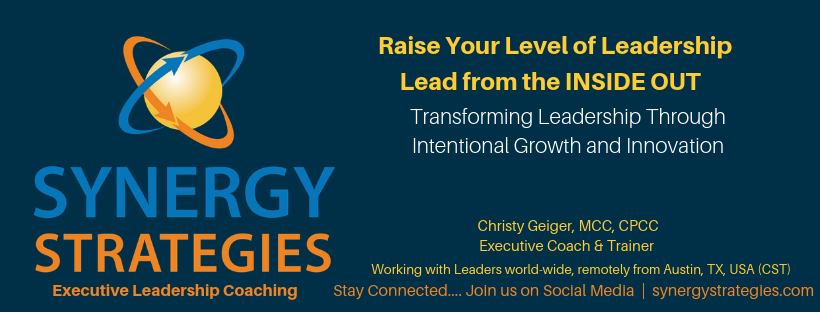
As humans, we are emotional beings. Things happen that stir our subconscious beliefs, unrealized biases, and silent expectations. A person can be going along in their day and suddenly emotions are flowing and sending messages to the brain and the brain reacts. To put it simply, we move from the greater emotional stability of the frontal lobe to the limbic system where the amygdala gets activated and things begin to spin and be triggered.
As humans, we want to be able to respond maturely and be able to “control” our emotions, so, are there tools that we can use to help our brains to have a healthier emotional response? What can take us out of the limbic firing state and back to the solution-focused frontal cortex?
There are several strategies that can help when we are emotionally activated so we can better regulate ourselves. There are many benefits to emotional management in addition to responding better in the moment. These include greater self-control, personal self-management, getting unstuck and out of the spin.
One simple strategy is labeling. Labeling is a tool that simply allows a person to identify the emotion or summary of what is going on for them. It could even be a metaphor to describe a thought, feeling, sensation, etc. While not a scientific explanation, the act of labeling seems to give the heart and mind congruence, almost like the feeling of being understood. The amygdala calms as it feels affirmation of “yes, this is it” and current shifts back to the frontal lobe for ongoing processing, management, and next steps.
A few examples of this might be:
- An Executive is in the workplace and feeling overwhelmed by the stress and pressures. The team is wrestling with some recent decisions and feedback has been highly critical and negative. The Executive feels frustrated trying to lead forward but unable to artfully keep everything together. A question might be asked, “What is a metaphor that describes this feeling and sensation you have?” The Executive might answer something like, “I feel like I am an octopus but there are people pulling on every leg and stretching in a different direction. I feel so pulled and stretched it seems my legs are going to pop off or my head is going to explode.” The act of applying the simple label of the “octopus” can instantly begin the shift in the mind and body as the mind feels understood and the analogy resonates. As the mind shifts from amygdala panic to the calmer sensation of understanding, greater meaning and insight begin to flow.
- A child is working on a project for school and feels the pressure of doing a great job with the high volume of information the limited time and resources. They struggle as feelings of fear of failure, overwhelm and indecision spin. They start to feel angry that there is no more time or space to share all the information. The child starts to blame and attack those around. Asking the child to label, “What does the project feel like to you right now?” allows the child to label what is happening. Asking the child to label how they want the project to look in the end, helps them to create an aspirational label. They might say something like, “It feels like a mess right now and I want it to be like a museum billboard.” The labeling can help the child to gather their many emotions, thoughts, and feelings and bundle them together in a “label” to summarize, almost like a basket to contain and hold the highly volatile emotions. Once “captured” in this figurative “basket” the emotions are acknowledged and contained. Rather than “rolling around” and “bumping” into other things, they are “held” in this label, which allows the brain to shift from the “pinball-like” environment of the limbic system, back to the frontal lobe. Often at this moment there can be deep breaths as the body calms to center and realize there are answers, solutions and a path forward. This interesting act of labeling supports the brain to shift to greater emotional regulation while also supporting better self-control as the child is able to sit down and begin to work on the project, where before the child was standing, rocking, physically agitated, etc.
- In marriage and relationships where there has been a reoccurring conflict, trigger point or pre-established sensitivity, code words can be a strategy to quickly communicate, diffuse emotion and bring instant understanding. Code words might seem abstract to the outsider but to the two people with the code word agreement, they know when the word “Red Rose” is used that the tension is getting high and thorns can be drawing blood but the request for sweet harmony is being called for. As the conversation flows and a person says “red rose” the label allows for communication to be identified to help the mind understand and shift from a triggered state back to a larger and more open place of understanding.
The strategy of labeling can be used in the workplace and at home. Really anytime the emotional climate is rising, it is possible to seek a way to apply “labeling”. It helps when the individual creates the most relevant label. At times a label might be suggested but should be done in an unattached manner so the individual can pick the label that is most fitting.
How can you tell if this works? Play with the concept by having a conversation or being in a struggle and notice the emotions but refrain from labeling. Notice how long the circular struggle continues and how it might escalate. At a point, invite a label to be applied. Notice how quickly the struggle reduces and calms. In another conversation or personal struggle, allow a label to be applied more quickly, notice how quickly this struggle reduces and calms. Track the different amounts of time prior to the label being created. Then track the time from when the label is created to when the emotional conflict has resolution or shifts from the spinning stuck to greater peace and understanding or a feeling of empowerment and forward momentum. We should find that regardless of how long the spinning prior to the labeling, that once a label is applied resolution happens quickly.
Labeling is a simple strategy and one that the brain can effectively use to navigate emotions to move from emotional reaction and struggle to emotional regulation and greater control. There are more strategies to use, however, this is a one that can be taught to kids and adults and used in all areas of life.


